The following article originally appeared as a feature on The Matador Network. Many people are reaching out now that the film Pete McBride and I made about our 1,600 miles journey down the Ganges is on Amazon Prime and Vimeo, so I figured it was a good time to share this post and the written story of our journey. Enjoy.
Rivers are supposed to start as trickles…tiny, meandering rivulets emanating from a mountain spring and cascading down a gentle hill, joining forces with other trickles as they make their journey to the sea. Or, at least that’s what I always thought. But not here.
At 13,200 feet in the Garhwal Himalaya of India, at a place called Gaumukh — or “Cow’s Mouth” — a river is born. Here, jagged walls of torn ice tower precipitously 300 feet above the valley floor. Serrated summits clad in ice and snow jut from the horizon, and the periodic crash of boulders releasing from the ice cliffs is all that punctuates the steady, incessant, thundering roar of the Ganges River at its source.
From the mouth of the glacier, water comes out in a torrent — 33-degree water, borne of ice and snow and altitude, raging and foaming and tearing at the walls that confine it. It is milky-brown water here, already carrying a heavy load of sediment, cargo the river will only add to as it courses another 1,600 miles to the Bay of Bengal.
Fury is the word that comes to mind: The river is fury. Cold, strong, unforgiving. And yet also nourishing, giving, caring, sustaining — the lifeblood of the continent, physically and spiritually.
The Ganges — or Maa Ganga, “Mother Ganges” — is believed to have emanated from Lord Shiva, the God of Destruction in the Hindu pantheon. He is a deity to be both revered and feared in equal measure. His fury is strong, with the power to create and utterly destroy. Likewise, his greatest creation, the Ganges, is fury, creation, and destruction. As Salman Rushdie so eloquently put it, “Fury…drives us to our finest heights and coarsest depths. Out of fury comes creation, inspiration, originality, passion, but also violence, pain, pure unafraid destruction, the giving and receiving of blows from which we never recover. The Furies pursue us; Shiva dances his furious dance to create and also to destroy.”
For the next six weeks, my teammates David Morton, Pete McBride, and I would be a part of this fury. We’d be attempting to climb to the highest source of the Ganges, onto the slopes of Chaukhamba IV, which towers above the head of the Gangotri Glacier, and then following the river’s raging, sacred course to its end in the Bay of Bengal. We were here to tell a story…a complicated story of a river, a goddess, a troubled watershed that is revered and reviled, deified, dammed, diverted and, in places, utterly destroyed.
TAPOVAN
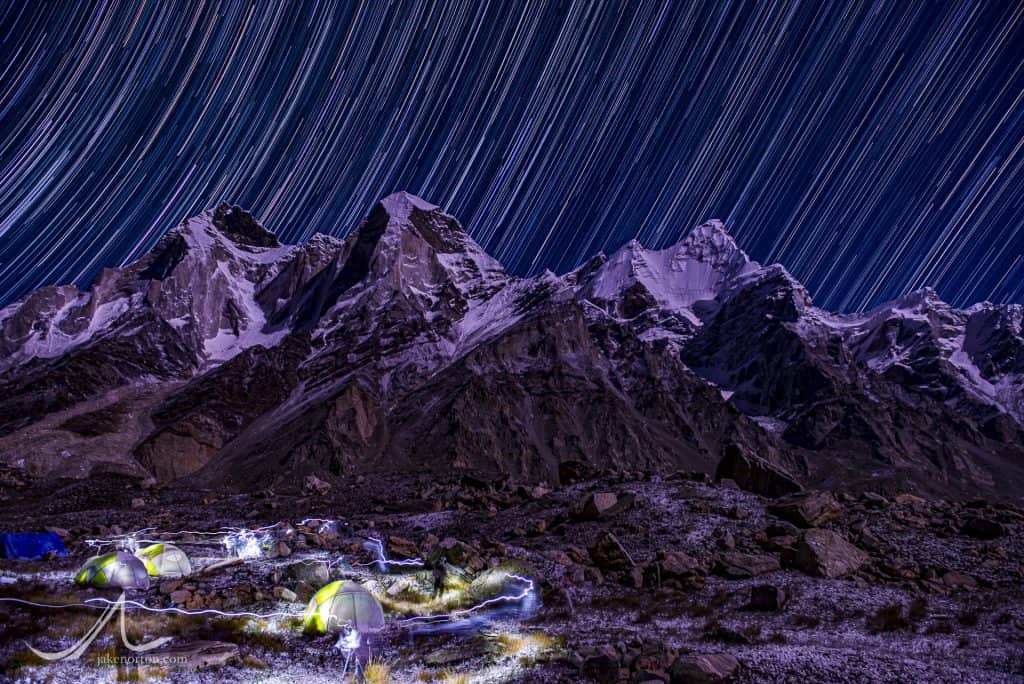
According to legend, the great King Bhagiratha performed a tapasya—or meditational penance—for one thousand years near this spot on the Gangotri Glacier in the hope of pleasing Lord Brahma, the Creator, and to entice him to bring the waters of the Ganga back to Earth so he could perform sacred rites allowing his ancestors to escape samsara (the cycle of death and rebirth) and attain moksha (transcendence from the earthly realm). Knowing the fierce waters of Ganga—in their fall to Earth from the heavens—would destroy the world below, Bhagiratha prayed to Lord Shiva to help him. Shiva quickly laid out his mass of thick, dreadlocked hair, catching Ganga and slowing her descent.
Our #GangaS2S expedition began here, in the high peaks of the Garhwal Himalaya. The Gangotri Glacier—one of the largest in the Himalaya—flows for some 30 kilometers through this valley, its eons-long struggle carving some of the most dramatic and inspiring peaks in the world. Below the granitic towers of Bhagirathi, Shivling, Meru, and the Chaukhambas, trickles of water course on the glacial surface…the first waters of the mighty Ganges. But here, under the sacred peaks of the river’s birth, it is known by a different name: the Bhagirathi River.
This is where the river begins its divine course, one which will take it across the heartland of India, providing spiritual and physical nourishment to some 400 million people along the way. At its birthplace, the Ganges is crisp, clean, wild, and free…far from what it becomes in its long journey to the sea.
DEVPRAYAG
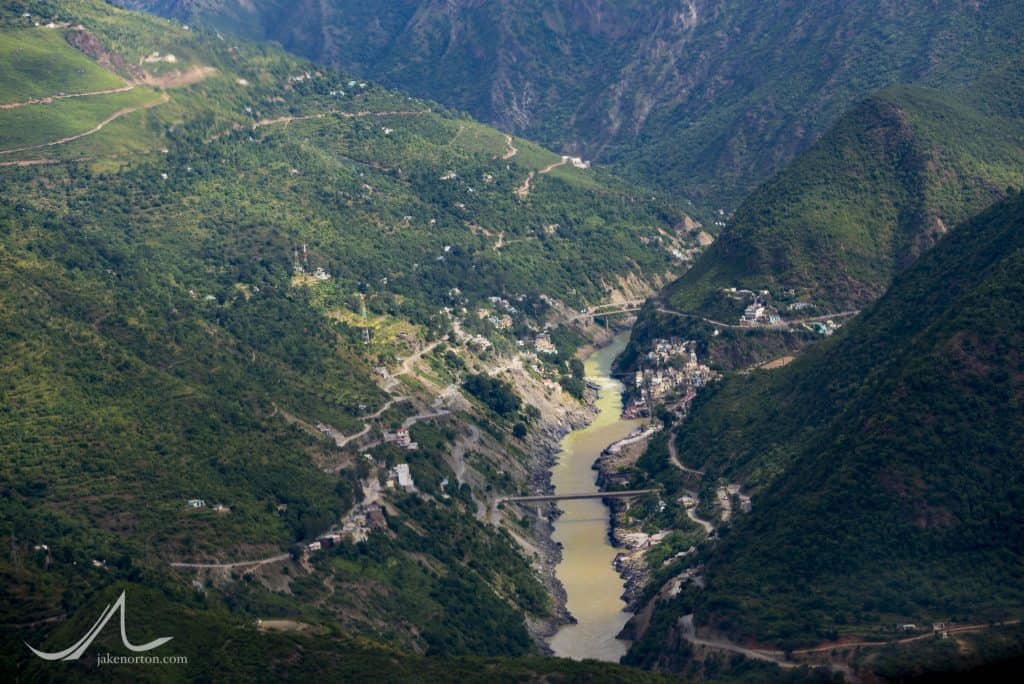
In 2006, a 45-year dream of India—conceived by the nation’s first Prime Minister, Jawaharlal Nehru—was finished: the monstrous Tehri Dam. Reining in the force and water of the Bhagirathi, Tehri is the tallest dam in India and one of the biggest in the world. It will eventually supply an estimated 2,000 MW of hydropower to India’s hungry economy, as well as 325 million gallons of drinking water to Delhi and the urban areas of Uttar Pradesh and Uttarakhand states. The water held back by the dam additionally provides irrigation for some 670,000 acres of land.
This has not come without a cost. Over 100,000 people were relocated from their ancestral towns and villages to make way for the dam and the lake it created. The dam itself sits astride the Central Himalayan Seismic Gap, a realm of geologic volatility where earthquakes are common, and quakes above magnitude 8.4 are expected to occur—a magnitude in excess of the dam’s tolerance.
And, of course, there’s the sacred cost: The disruption of the most revered waterway in India is not taken lightly. Since the dam went live, flow in the Bhagirathi has decreased from an average 1,000 cubic feet per second (cfs) to roughly 200 cfs and below. At times, the flow of the Bhagirathi below Tehri is said to dwindle to nothing—an important issue since these waters are the most sacred ones emanating from Gaumukh. In the image above, one can easily identify the wild-and-free Alaknanda by its brownish color thanks to its fast flow and heavy load of silt; the green waters of the Bhagirathi, in contrast, have dropped all their silt upstream of the Tehri Dam and take on a vivid green coloring.
RISHIKESH
Every evening in Rishikesh, as the sun fades behind the forested Shivalik hills and the sky is painted with subtle hues of red, pink, and purple, the devout and the curious gather along the banks of the Ganges. At Parmarth Niketan, one of the largest ashrams in Rishikesh, throngs descend to the river’s edge to sing, chant, and proclaim their devotion to and reverence for Maa Ganga.
The Ganga flows full here, frothy surges of silt-thickened water rushing out of the hills and onto the greater Indo-Gangetic plains. It is truly water of life: The glacial snow melt spilling from the mountains onto the plains directly sustains life for the 400 million who inhabit the watershed, and it nourishes crops of rice, sugarcane, lentils, potatoes, and wheat that help feed the estimated 1.26 billion residents of India.
It is no wonder, then, that the Ganges is worshiped—and has been for millennia. At Parmarth and dozens of other sites on the Ganges at Rishikesh, Ganga aarti (offering) lingers long after the sun’s final rays have dissipated into the night. A soft, orange hue from thousands of devotional diyaas (oil lamps burning ghee) transform the darkened landscape into one of warmth as myriad voices combine into a chanting crescendo. Soon the river itself is alight with diyaas, their small flames cradled in banana-leaf boats, bobbing in offerings of thanks to Maa Ganga.
DHOBI GHAT
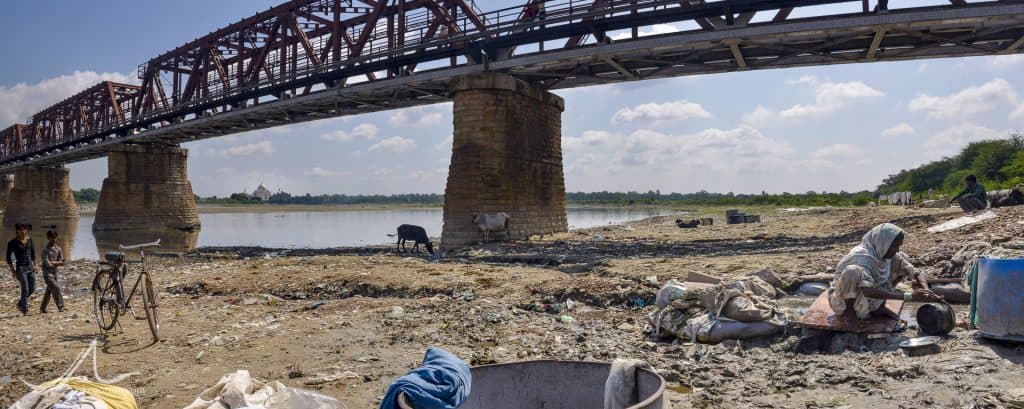
Each year, an estimated three million people visit the Taj Mahal, the iconic Moghul edifice built by Emperor Shah Jahan in 1632. Situated on the banks of the Yamuna River—one of the prime tributaries of the Ganges—the Taj speaks to the grand history of India and the troubled future of its waterways.
At Dhobi Ghat (literally, place of washing) on the Yamuna, the eternal beauty of the Taj is muted by the pollution that abounds here. Once a proud and vibrant river, the Yamuna at Agra is but a shadow of her past. Revered—like the Ganges—as the goddess Yamuna, Hindus believe a bath in her sacred waters provides salvation.
In 1909, the Imperial Gazetteer of India spoke of the “clear blue waters of the Jumna [Yamuna]” running strong across North India. Today, the Yamuna flows as a sickly, hot trickle of black waste—human, industrial, agricultural—its banks lined with trash and feces and decomposing remains. Upstream, the 17 million inhabitants of New Delhi dump more than 50% of their waste straight—untreated—into the Yamuna; that translates to some 1,900 MLD (million liters per day) of untreated sewage going into the Yamuna at Delhi. Dams, diversions, and barrages siphon the Yamuna’s waters for agriculture and industry, causing the river to barely flow at all for several months of each year.
The result for the river is obvious; for the Ganges, the Yamuna’s pollution only adds to its own when the rivers converge downstream at Prayag, the sacred confluence at Allahabad. And, for the Taj, the Yamuna’s troubles are its own: Groundwater levels in the Yamuna basin have been dropping up to five feet per year, causing the Taj’s foundation to weaken and cracks to appear across its ancient facade. As Professor Ram Nath said in an article for the Daily Mail: “The river is a constituent of its architectural design and if the river dies, the Taj cannot survive.”
KANPUR
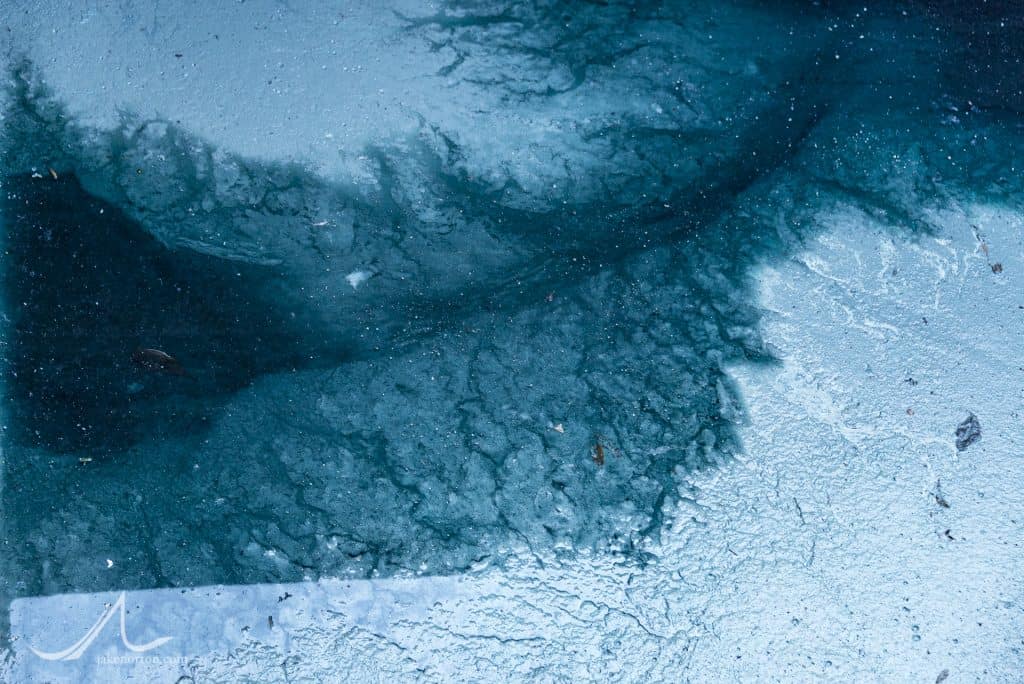
Blue, sludge waters fill massive vats at the wastewater treatment plant in Kanpur. Full of chromium, lime, and many other toxic chemicals, this water is often flushed untreated straight into the Ganges. 
Workers at Sahara Tannery toss lime-soaked hides into vats of chromium and other chemicals.
If you have anything made of leather in your home—shoes, belts, jackets, furniture—there’s a good chance some of it came from Kanpur. Once dubbed the “Manchester of the East”—referencing England’s industrial epicenter—Kanpur is a major metropolis in Uttar Pradesh, India’s most populous state, and leather tanning has long been a mainstay of the economy here.
It’s easy to tell when you’re entering Jajmau, a predominantly Muslim suburb of town and home to most of the city’s tanneries. As one drives southwest from the city center, things change abruptly: Modernity fades away into a wash of low buildings interspersed with shanties. Paved streets suddenly turn to dirt, the fancy cars of downtown are replaced by sputtering tuk-tuks belching dark smoke, thundering lorries ply the potholed streets. And there’s the smell: sharp, burning, pungent, a mix of rotting flesh and industrial chemicals that sits heavy in the air.
The tanneries, while definitely a problem, are not all bad. They provide—and have for more than 150 years—much-needed jobs, especially to the oft-maligned Muslim population here. They produce export-quality goods and bring in much-needed cash for India; in 2012, Kanpur exported an estimated Rs. 4,500 crore (roughly $750 million) in leather goods.
But this comes with a huge cost. Harmful chemicals like mercury, arsenic, and chromium are mainstays of leather tanning and, after use, the waste chromium becomes hexavalent chromium (Cr VI), known to cause many ailments including lung cancer, liver and kidney failure, and more. Each day, tens of thousands of workers go into the tanneries of Kanpur, often working with little to no safety gear, handling and breathing and ingesting toxic chemicals for long hours. Once the tanning is done, the waste is treated to some degree by the tanneries, and then, by government mandate, is passed through often-leaking sewage pipes to the government-run sewage treatment plant, where it should be fully cleaned before discharge into the nearby Ganges. However, stories abound of tanneries either bypassing the system and discharging directly into the river, or the government plant failing to treat the wastewater at all before passing it along to the Ganges. By some estimates, the Ganges at Kanpur receives up to 130 million liters of untreated tannery waste each day.
DURGA PUJA
Our arrival in Patna, the largest city in Bihar, coincided with the arrival of Cyclone Phailin—the second largest cyclone ever to make landfall in India. Generally speaking, Bihar is not the state to be in in northern India during times of flood. Here, the Ganges flows full and heavy across fertile plains and is fed by two powerful rivers, the Gandak and Koshi, which each drain massive stretches of the Nepal Himalaya. (The Koshi, thanks to its devastating floods through the centuries, has been nicknamed the “Sorrow of Bihar.”)
It was also the final day of Durga Puja, one of the biggest Hindu festivals of the year. Not even a cyclone can stop the celebrations. In a blinding storm with gumdrop-sized raindrops pelting us, we crossed the seething, violent, wind-whipped Ganges at Mahatma Gandhi Setu and descended to Gai Ghat. Here, a group of several hundred young men danced and sang and laughed in the violent storm. One by one, they pulled massive, intricately-decorated pandals, or statues, of the goddess Durga down to the water’s edge. And, one by one, the statues were dumped with great fanfare into the rushing waters. Almost immediately, they began to break apart, heads separated from bodies, arms detached, flecks of brightly colored—and often toxic—paint mixing with the ruddy brown silt of the Ganga.
We watched as a dozen or more pandals were pushed into the river. As we left, soaked to the bone and cameras suffering, dozens more were coming to meet the same fate. And along the entire length of the great river, the same thing was happening. From Kolkata to Delhi and everywhere in between, tens of thousands—if not more—statues were being ceremoniously dumped into the river, reverence for the sacred bounty of Maa Ganga contributing to her demise.
KOLKATA
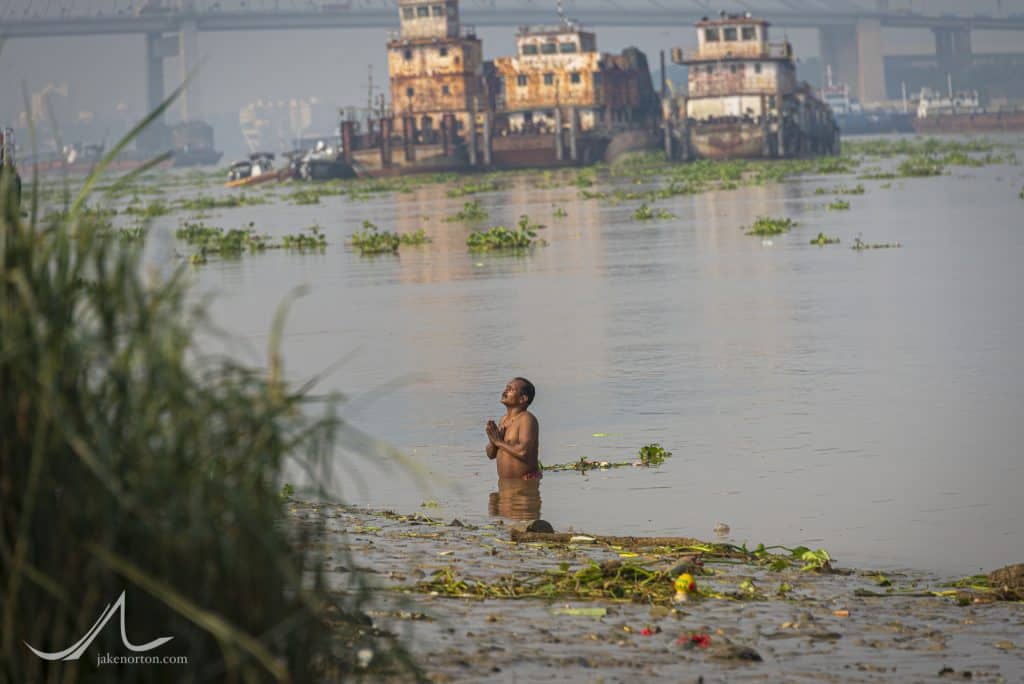
The final few hundred miles of the Ganges River is, like most of the great waterway, in dispute. In 1976, the Indian government completed the Farakka Barrage, a 7,350-foot-long diversion dam that sends Ganges water from the main river (which becomes the Padma at the Bangladeshi border, 11 miles from Farakka) into the Hooghly and to the Port of Kolkata.
Once India’s largest port, and fed robustly by the Ganges-Hooghly, Kolkata’s hydro-fortunes started to change in the mid-1800s, when the river course switched and more water began to flow into the Padma and to present-day Bangladesh than into the Hooghly distributary. This process continued for a century, resulting in heavy siltation of Kolkata Port, adversely impacting deep-water shipping there. Hence the Farakka Barrage, which sends up to 40,000 cubic feet per second (cfs) of water into the Hooghly during the dry season, helping to flush the port.
While great for Kolkata, the diversion has wreaked havoc in neighboring Bangladesh, taking away up to 58% of the river’s dry-season flow. This reduction is blamed for the massive loss in fish catches, increased salinity of drinking water supplies, negative impact on both rice harvests and health of the coastal mangrove forests, and more. The resulting water conflict caused the signing of a treaty between the two delta nations in 1996, but both still claim rights to more water than the Ganges carries.
GANGA SAGAR
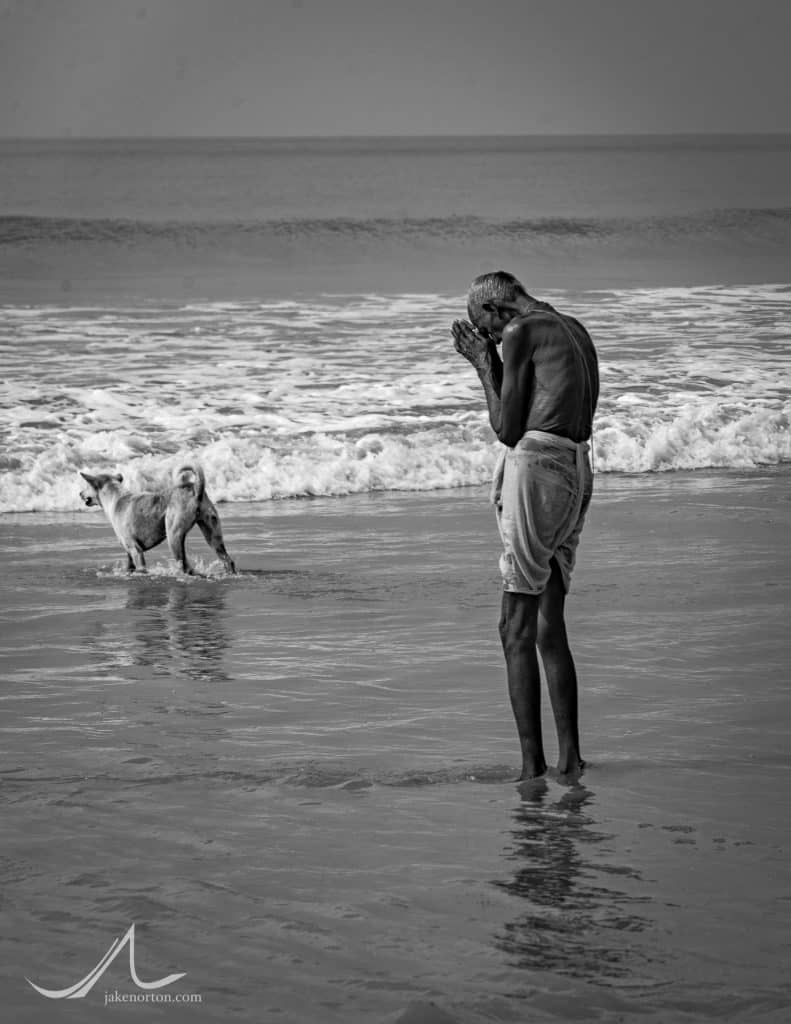
At Ganga Sagar, the Ganges River finally spills into the sea, its nearly 1,600-mile journey complete. A sacred place for Hindus, millions come here each year to give offerings to Maa Ganga, to bathe in her sacred waters as they finally kiss the sea, and to pray.
The water here looks welcoming, and a dip in it offers welcome relief from the sweltering, 90+ degree heat and oppressive humidity of the Sunderban Islands. Diluted by the mass of the Bay of Bengal, it’s easy to forget the torments Ganga has faced upstream; here, all you see is water, spraying in mist, crashing in waves, dancing over feet, splashing over heads…healing, nourishing, forgiving.
In “The Flow of the River,” Loren Eiseley wrote: “If there is magic in this planet, it is contained in water...Its substance reaches everywhere; it touches the past and prepares the future: It moves under the poles and wanders thinly in the heights of the air. It can assume forms of exquisite perfection in a snowflake, or strip the living to a single shining bone cast up by the sea.”
The modern Ganges is a complex web. She is revered and reviled, beloved and belittled. Her waters give, and they destroy, in equal measure. There is indeed magic in the Ganges, literally and figuratively, spiritually and physically. It is the challenge of modern India to embrace her magic, to love her physically as they love her spiritually, and allow her magic to continue.



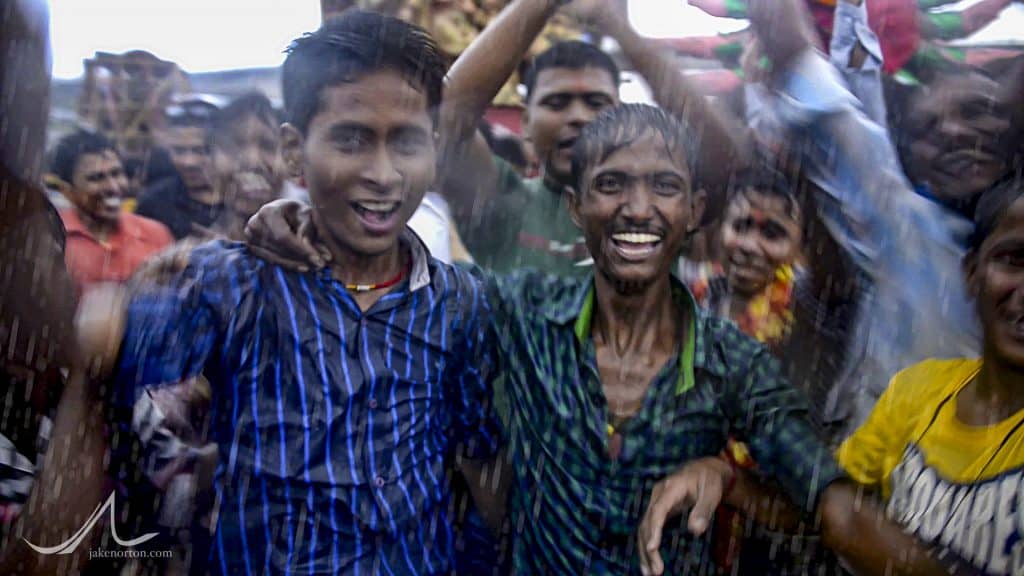
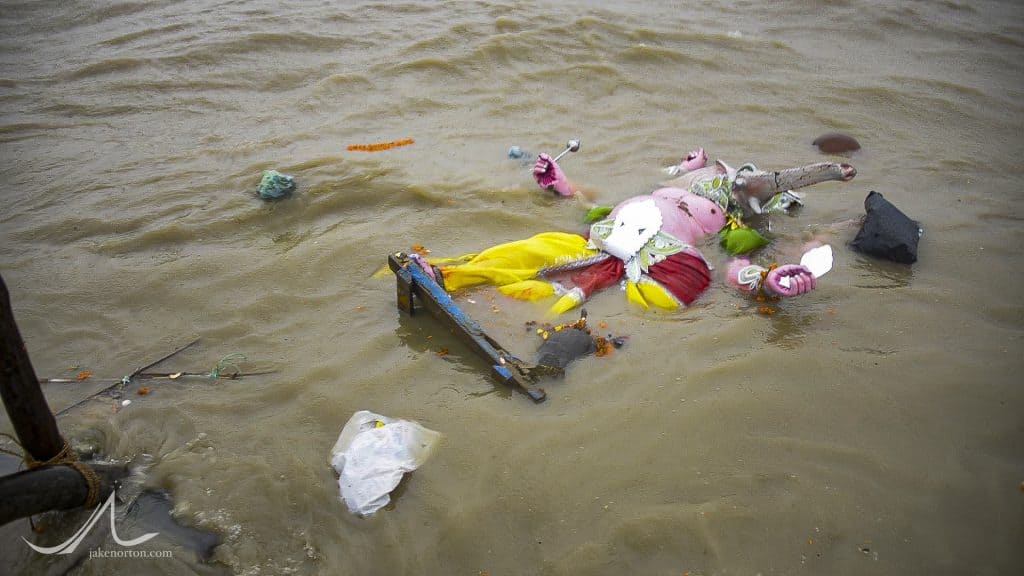


I drowned in Ganges in Munger when i was 3 year old. Ganga Maiya herself saved me